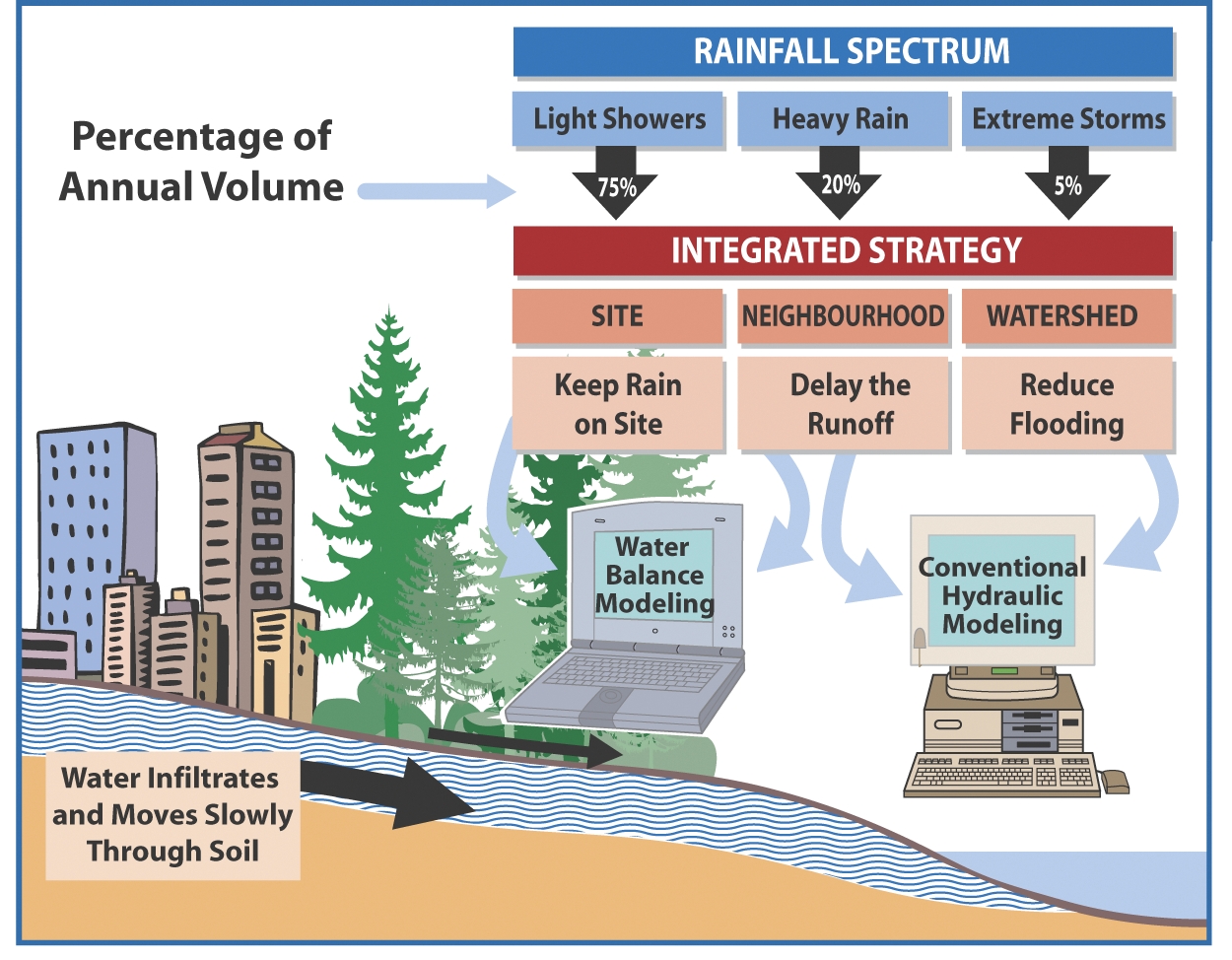Well, What is Rainwater Management, Really?
 Design with nature philosophy at core of contemporary drainage planning in British Columbia
Design with nature philosophy at core of contemporary drainage planning in British Columbia
From a drainage planning perspective, “Sustainability” means Design with Nature to improve the Built Environment while at the same time protecting the Natural Environment. The desired outcome is to sustain community livability.
Historical Perspective on the BC Experience
“In British Columbia, there has been a change in thinking among drainage practitioners, and the technical language is in transition. This change has  seen the single function view of traditional ‘stormwater management’ give way to the integrated and comprehensive perspective that is captured by the term ’rainwater management’. This sea-change began in 2004,” states Kim Stephens, Program Coordinator for the Water Sustainability Action Plan for British Columbia.
seen the single function view of traditional ‘stormwater management’ give way to the integrated and comprehensive perspective that is captured by the term ’rainwater management’. This sea-change began in 2004,” states Kim Stephens, Program Coordinator for the Water Sustainability Action Plan for British Columbia.
For more information on this language shift and why, click on Well, What is Rainwater Management Really? to download a 1-page handout released by the Water Balance Model Partnership in 2005.
From Stormwater Management to RAINwater Management
Stormwater suggests there is a problem, whereas rainwater is a resource. The evolution to an integrated approach is summarized below:
Evolution of Drainage Practice
Since it was first coined in the early 1970s, ‘stormwater management’ is the term that has been commonly used – mostly in North America – to refer to managing rainwater runoff under extreme wet weather conditions. For the past 30 years or so, the focus has been on conventional “storm-based” based approaches to sizing and designing conventional drainage facilities.
Urban design thinking has evolved rapidly in recent years, however, to address the entire spectrum of rainfall systems, not just storms, in ways that reflect more natural water systems. ‘Rainwater management’ – generally used in Europe – more accurately describes this more holistic approach.
Traditional stormwater management is reactive. It only deals with the consequences of the rare extreme events. Rainwater management, on the other hand, is proactive in managing all rainfall events that occur in a year (i.e. ranging from 100 days in the Okanagan region to 170 days in the Georgia Basin region).
The graphic below illustrates the British Columbia approach to Integrated Rainwater Management that has been unfolding since Stormwater Planning: A Guidebook for British Columbia was published in 2002.
Integration with Community Design
Rainwater management integrates drainage infrastructure planning with relevant municipal planning processes – such as Official Community Plans, Neighbourhood Concept Plans, recreation and parks plans, and even strategic transportation plans – to address the impacts of rainwater on community values. In the British Columbia context, the vision is to create a lasting legacy through a design with nature approach to integration of rainwater management with community design.
The desired outcome is to improve both the natural and built environments in an urban setting. This means determining how rainwater management objectives can be integrated with land development processes and tools to mitigate the cumulative impacts of landscape alteration, and produce cumulative watershed landscape benefits.
In general, drivers for Integrated Rainwater Management are existing problems to be solved and/or environmental resources to be protected. Both are associated with land use change, either past or proposed.
Posted August 2005




